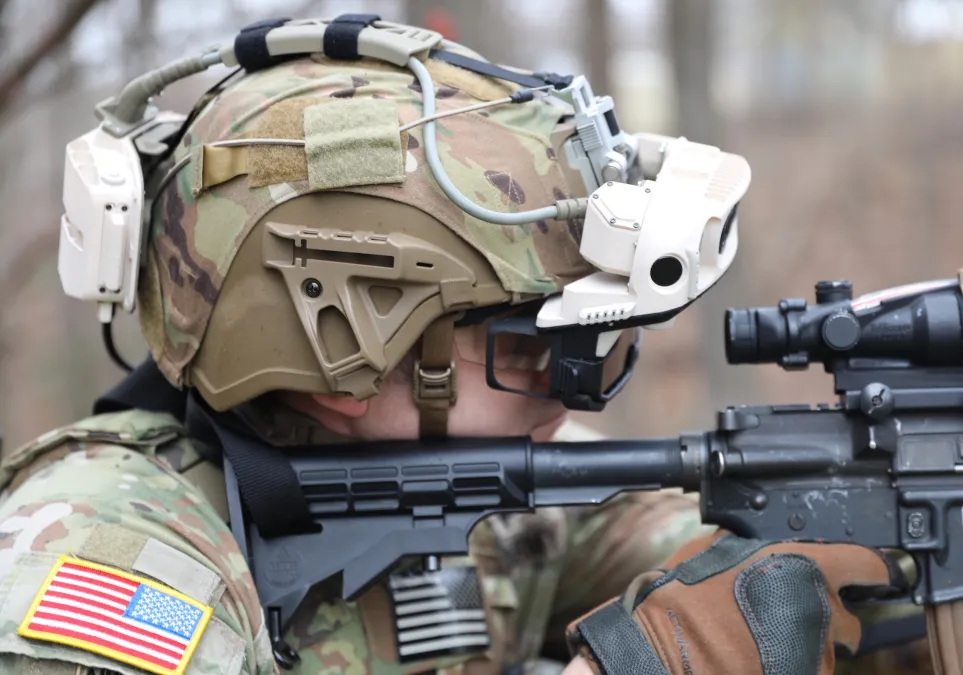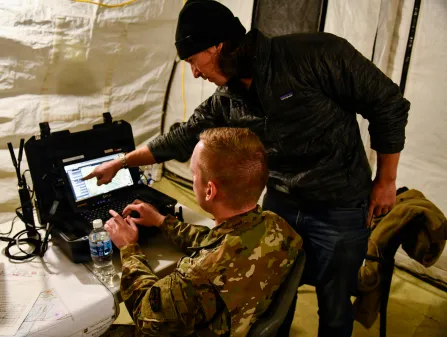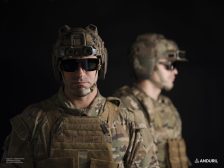Microsoft plans to hand over reins of Army’s IVAS program to Anduril

Microsoft is proposing to hand over industry leadership of the Army’s Integrated Visual Augmentation System program to Anduril, the companies announced Tuesday.
IVAS has been one of the service’s highest-priority modernization initiatives, with Microsoft as the prime contractor. The system — which includes ruggedized headgear and software with night-vision, thermal-sensing and augmented reality capabilities, among others — was inspired by the company’s HoloLens 2 device. The Army aims to use the equipment for training and battlefield operations for dismounted troops. The program was projected to be worth as much as $21.9 billion if it reaches full fruition.
“Through this partnership agreement, and pending Department of Defense approval, Anduril will assume oversight of production, future development of hardware and software, and delivery timelines. This agreement also establishes Microsoft Azure as Anduril’s preferred hyperscale cloud for all workloads related to IVAS and Anduril AI technologies,” the companies said in a joint press release. “Anduril’s mission focus on innovation in defense technology, deep understanding of military requirements, and unique approach to manufacturing defense products will ensure future program development specifically tailored to the evolving needs of the Army as well as production at scale and at lower unit cost.”
The firms have already been teaming on IVAS. In September 2024, Anduril announced that its Lattice platform was being incorporated into the system. Lattice can be employed as a situational awareness tool that uses capabilities such as AI, computer vision, edge computing and sensor fusion to detect, track and classify objects of interest for users, according to a product description.
The Army has been rolling out different variants of IVAS to soldiers for experimentation and to get their feedback on the technology. The latest iteration developed by Microsoft is known as IVAS 1.2. Microsoft had already been making enhancements to IVAS equipment and software, some of which were prompted by soldier complaints about early versions.
The Army requested $255 million from Congress for fiscal 2025 to buy more IVAS systems — including 3,162 IVAS 1.2 heads-up-display platforms — as well as $98 million for research, development, test and evaluation related to the technology.
Anduril founder Palmer Luckey previously launched Oculus VR, the startup known for its commercial virtual reality headset which went on to be acquired by Facebook.
“For me, this announcement is deeply personal. Since my pre-Oculus days as a teenager who had the opportunity to do a tiny bit of work on the Army’s BRAVEMIND project, I’ve believed there would be a headset on every soldier long before there is a headset on every civilian. Given that America loses more troops in training than combat, the Squad Immersive Virtual Trainer (SiVT) side of IVAS alone has the potential to save more lives than practically anything else we can imagine building,” Luckey wrote in a blog — titled “Turning Soldiers into Superheroes” — published Tuesday.
Anduril is also building a variety of drones and other high-tech tools, such as “edge data integration services capabilities,” for the Pentagon. In December, it announced that it was forming an alliance with Palantir and a new “consortium” to merge AI capabilities for defense customers.
Meanwhile, Microsoft is touting its ability to deliver cloud capabilities to boost Anduril’s products.
“Microsoft’s advanced cloud infrastructure and AI capabilities will continue to provide a robust backbone for the [IVAS] program, enabling seamless data integration and real-time insights critical to soldier effectiveness. Artificial intelligence will be foundational to all technical innovations for national security missions, and the cloud is essential to successfully delivering AI whenever and wherever it is needed. Through this agreement, Anduril will establish Azure as its preferred hyperscale cloud to support its AI development. Azure, through its commercial, U.S. government and classified clouds, provides high resiliency, sophisticated capabilities, flexibility and advanced security, designed to meet the stringent compliance requirements of the nation’s most sensitive data,” the companies said in a release.
Microsoft is already a major cloud vendor for the Pentagon. It’s one of four companies — along with Google, Oracle and Amazon Web Services — that were chosen to compete for task orders for the $9 billion enterprise Joint Warfighting Cloud Capability (JWCC) program.
It’s unclear if the DOD will approve the program handover that Microsoft and Anduril are proposing for IVAS.
The new partnership agreement comes at a critical time for the IVAS program. The plan was to transition it to a major capability acquisition pathway no later than October 2025.
However, Army officials are preparing to potentially recompete the IVAS effort via an initiative known as IVAS Next.
Last month, the service released a request for information for IVAS Next, seeking information from vendors to determine their capabilities to act as a prime contractor in the development and manufacturing of the technology.
“This RFI does not constitute a Request for Proposal (RFP) or a promise to issue an RFP in the future,” officials noted.
Companies were asked to include information about the design and features of their IVAS Next solution.
“The narrative should cover Heads Up Display (HUD), body-worn compute, night vision capability, company-level communications network, and any software supporting services or systems (e.g., Cloud or Edge computing),” officials wrote.
Vendors were also asked to lay out a program management approach for their IVAS Next solution, including identifying teaming arrangements and key subcontractors and suppliers.
The Microsoft and Anduril announcement was released on the same day that the Army had scheduled a virtual industry day for IVAS Next.
“The purpose of this event is to inform interested companies of the IVAS Next requirements and acquisition path and to hold an open forum for discussion of IVAS Next capability requirements,” officials wrote in a special notice.
Last year, DefenseScoop asked Anduril officials if the company was considering competing as a prime contractor for IVAS Next.
“We’re closely following the developments around IVAS-next and are confident that the combined strengths of Anduril and Microsoft can deliver a solution that enhances both soldier survivability and lethality. We will continue to monitor IVAS-next, and as always, we are committed to positioning ourselves to do what’s best for the warfighter, staying true to our mission of delivering the most effective solutions,” an Anduril spokesperson said.






